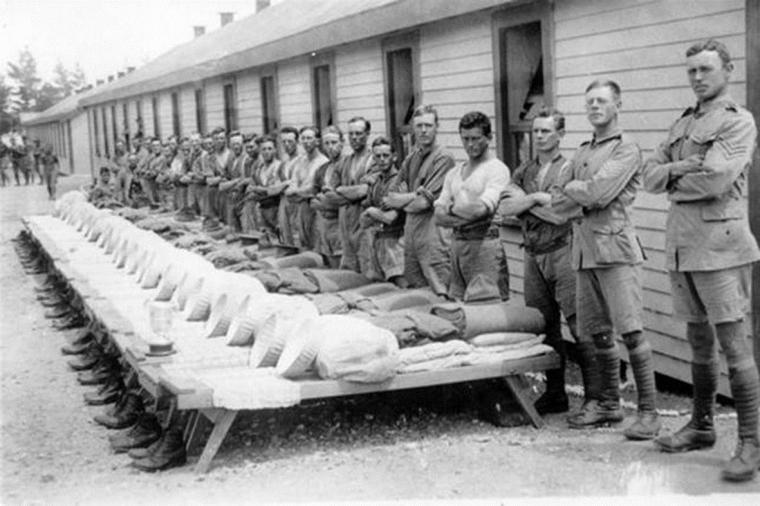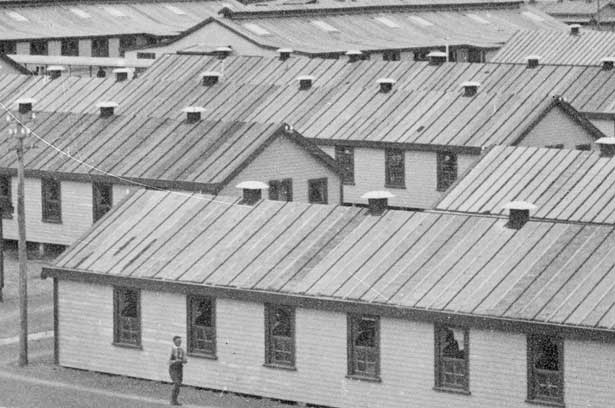A call out for items relating to the WW1 Featherston Military Camp has yielded a “deluge” of correspondence from all over the country, says Alice Hutchison, ahead of a planned exhibition on the subject opening on 22 January 2016.
But the Aratoi director wants to remind people to get in touch even if they think their items are of little importance.
“Photos, correspondence and memorabilia may have been tucked away in boxes or inherited from relatives and not looked into for years,” says Hutchison, “and people may not realize just how important and special they are.”
A case in point was a letter she received from a Mrs. Trumper in South Canterbury describing some postcards they had in their family. “These turned out to be original Mence & O’Halloran cartoon postcards produced in the Camp, and yes, they are very significant and could be featured in the exhibition.”
Featherston Military Camp was New Zealand’s largest WW1 training camp, accommodating over 60,000 soldiers between January 1916 and November 1918. It was located north of Featherston between the town and the Tauherenikau River, and was larger than Featherston itself. In fact, its scale as a military camp was unprecedented for its time in Australasia, and most New Zealand soldiers passed through its gates for their training.
“You don’t realise the huge scale of the Camp until you see photographs of the thousands of the men marching over the Rimutakas. It was a substantial village, with its own shops, a cinema, bakeries, restaurants, a hospital and an exceedingly busy post office.”
The barracks housed 4500, with a ‘Canvas Camp’ holding about 3000. At its peak, it could sleep and feed more than 9000 men – via 16 dining halls and six cookhouses - training them to be infantrymen, artillerymen, cavalry, and machine gunners.
Infantry would spend about two months in camp, while mounted rifles and artillery did almost all their training at Featherston. After training, men marched the 21 km over the Rimutakas for embarkation at Wellington. Their journey will be re-enacted this year on 27 September by the Rimutaka Crossing Memorial Re-enactment Group and members of the public who wish to participate.
Hutchison is working with Neil Frances of Wairarapa Archive to bring this chapter of Wairarapa’s history to life. “It’s exciting because there is potential to develop this as a new area of history and collecting within the museum.”
Community input will be key to the success of the exhibition, says Hutchison. “We won’t be glamorising the story of the Camp. It will be the stories that emerge from people who get in touch with us that will guide the direction of the exhibition,” she says.
Aratoi is not yet able to receive physical items relating to the WW1 Camp but staff are creating a database to record correspondence, and items will be requested at a later date. If you have items relating to Featherston Camp Centenary Exhibition 1916-2016 (22 Jan – 5 May 2016), please contact Aratoi on T: 06 370 0001. Email: [email protected]
Currently showing at Aratoi: Masterton Modern, until 31 May; Four hundred shades of DMC: Margaret Milne, until 3 May; Te Matatini Mauri, until 11 May; A Gathering: John McLean, until 10 May; Hong Kong Song – Madeleine Slavick, until 10 May; Settling the land: Order out of Chaos?, until 10 May. Event: Bill McKay Senior Lecturer / Associate Head, School of Architecture, will talk on the development of the State House on 9 May, 2-3pm.

An image from Neil Frances’ book ‘Safe Haven’ showing Kit
inspection at Featherston Camp. The wooden beds each hold uniform,
kitbag, wash basin and bedding. The large trophy cup on the third bed
suggests this group has won an inspection contest. Photo courtesy
Wairarapa Archive 00-38/6.digital – Neil Frances.

Featherston barracks. Photo: www.nzhistory.net.nz/war/featherston-camp.